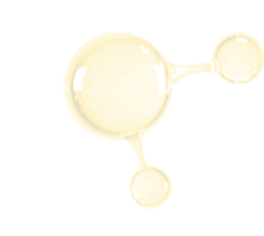Weeks 25-26:
Recently, the baby seems restless—kicking off blankets while sleeping, getting fussy or crying when lying down, and struggling to sit up. This actually indicates the baby's desire to sit up. However, learning to sit is a gradual process—rushing may affect spinal development. Vaccine Reminder: It's time for the third hepatitis B vaccine and first group A meningococcal vaccine. Visit the hospital on schedule! For vaccine questions, use Yili Aier Club's "Aier Vaccine" feature on Facebook/Whatsapp for detailed explanations or contact online customer service.
Phased Guide to Helping Babies Sit Steadily
Generally, babies start learning to sit between 4-7 months, and about 90% can sit alone for a few minutes without support by 8 months.
- 4 Months: Pull-to-Sit
From 4 months, neck and head muscles strengthen, and babies learn to prop up with arms. Hold the baby's wrists, gently pull from supine to sitting, then lower—helping practice pull-to-sit. - 5-6 Months: Supported Sitting
Have the baby lean against a sofa back or use pillows to support the back/sides. Supervise to prevent falls. Start with 3-5 minutes, no more than 10 minutes when proficient. - 7 Months: Independent Sitting
At 7 months, babies usually sit independently. Place favorite toys in front to encourage reaching and playing, training independent sitting.
【14】Weeks 27-28:
As babies grow, intestines mature—complementary foods can start at 4-6 months, but milk remains primary until 1.5 years. If breast milk is insufficient near 7 months, even with solids, consider mixed feeding with formula. When transitioning from breastmilk, babies may reject bottles—choose soft latex nipples, fill with breastmilk first, then switch to formula. Opt for OPO-formula milk suitable for baby intestines, mimicking breastmilk for better digestion.
How to Choose Formula for Baby Gastrointestinal Health?
- Expensive Doesn't Mean Better
Evaluate formula based on ingredients, production process,奶源地 (milk source), brand, and reviews—avoid the误区 that high price equals high quality. - Choose by Age Stage
Formulas are divided into stages: 0-6m (Stage 1), 6-12m (Stage 2), 12-36m (Stage 3). Each stage adjusts nutrients for age—select accordingly. - Priority on Formula Ingredients
Babies have immature intestines—prefer formulas with OPO structural fat (similar to breastmilk fat) and prebiotic blends for better digestion, softer stools, and constipation prevention. Avoid blind trust in imported formulas—some don't meet Chinese standards (e.g., Japanese formulas lack iodine, unsuitable for Chinese babies with insufficient iodine intake).
Weeks 29-30:
Nearing 8 months, babies enter the crawling critical period—no longer satisfied with lying down. Attracted by objects, they kneel, lift the abdomen, and crawl toward toys. While exciting, prevent bumps and falls—use anti-collision strips on furniture edges. Note: Crawling timelines vary—avoid comparing with other babies.
Understanding Baby Crawling: What Parents Need to Know
- When Does Crawling Start?
Most start learning at 7 months, crawl on elbows and knees at 8-9 months, eventually coordinating hands and knees to crawl proficiently. - Benefits of Crawling
Promotes physical development, builds strength for standing/walking, enhances vision and cognition, and stimulates curiosity—hence "the more they crawl, the smarter they get." - How to Train Crawling
From 7 months, encourage tummy time to build limb strength. Use toys to motivate crawling, add fun, and demonstrate crawling postures for imitation.
Weeks 31-32:
Approaching 8 months, besides complementary foods, offer soft bread and teething sticks for chewing practice. With diversifying diets, improper feeding may cause indigestion or constipation (exacerbated by seasonal factors). Observe carefully, massage the abdomen, and consider probiotics. Choose formula with probiotics to reduce constipation risk.
4 Steps to Understand Baby Constipation
- What Causes Constipation?
Stool stays in the body too long, losing moisture and becoming hard, making excretion difficult. - When Is It Not Constipation?
Breastfed babies (0-6m) may go 2-3 or even 3-5 days without pooping. It's normal if they don't strain, have no blood, and stools are soft. - Why Does Constipation Occur?
- Feeding Issues: Inadequate intake, unbalanced diet (too little veggies/grains, too much meat).
- Nursing Issues: Poor toilet habits, intestinal dysfunction. - How to Improve Constipation?
- Balance nutrition, diversify foods, establish regular toilet habits.
- Encourage exercise to promote intestinal peristalsis.
- Use probiotics to regulate gut flora and prevent constipation from the source.

 En
En Member Login
Member Login Contact
Contact







